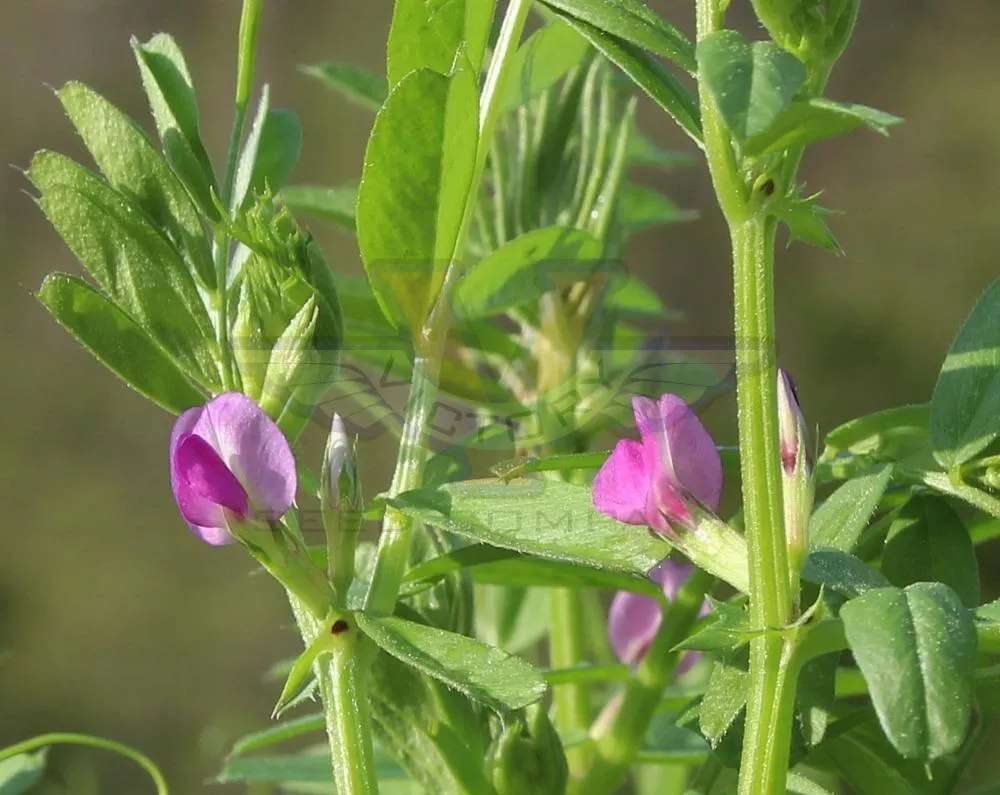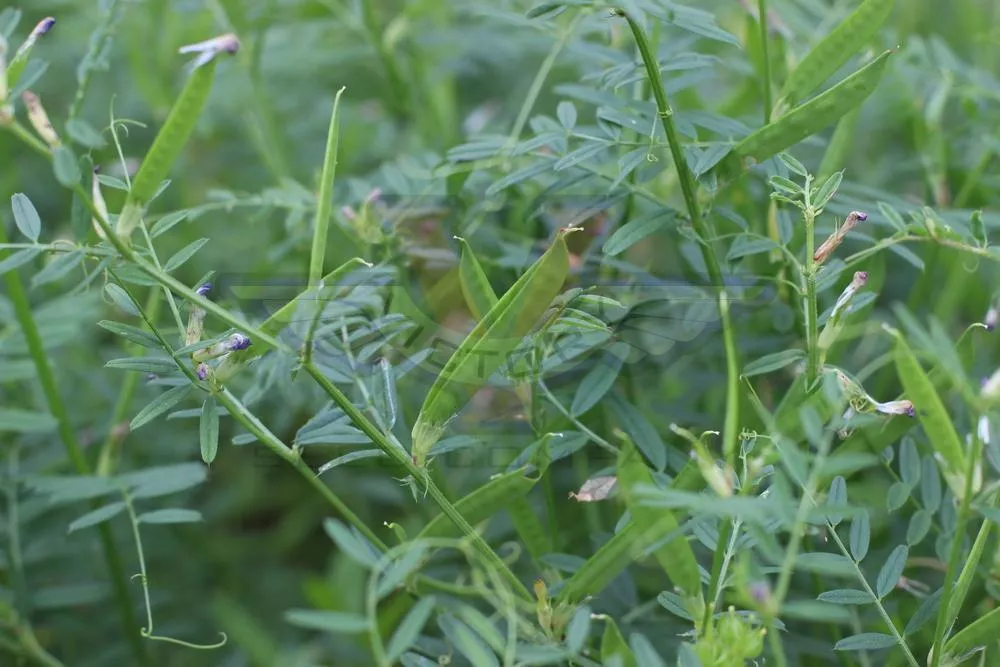

Vetch, Common
Vicia sativa
Price: $3.25
SKU: 10010211Choose a variant:
'Common Vetch', also known as 'Tare', is native to, and except for the most northern areas, found all over Europe. It has spread to parts of Northern Africa and Southwestern Asia, probably carried there by the Romans who highly valued it as a forage crop. Although not indigenous to North America, it is now cultivated in nearly all parts.
Historically it has been used as fodder for dairy cows. It is thought to improve the quality and increase the production of milk. Back in the old days, that is what our ancestors used it for here on our farm and in spots along fence lines or in old pasture areas, it can still be found growing wild. As a nitrogen fixing legume, we use it as part of our green manuring / cover crop mix to help improve the soil in our fields.
'Common Vetch' will grow quite dense and luscious and reach about twenty-four inches in height. It can be sown in most areas in early fall or early spring. Although it will sprout and get established, winter growth will be minimal but will take off when the right spring conditions arrive.
Like most field and cover crops, broadcast sow the seeds onto well prepared soil and then scratch in so that good soil contact is made. Seeds should not be covered more than 3/4 of an inch. In a pinch, we have surface sown onto freshly tilled garden areas, just before a predicted rain, and that was good enough to establish a nice stand of plants.
Which brings up this point . . . they are very easy to start from seed. Too easy in fact. What this means is that if you are using them as a cover crop like we do, mow the plants as soon as flowering occurs. Don't let them go to seed or you will be weeding stragglers that germinate throughout the gardening season.
One ounce is approximately 400 seeds and will cover about 200 square feet of garden space.
Historically it has been used as fodder for dairy cows. It is thought to improve the quality and increase the production of milk. Back in the old days, that is what our ancestors used it for here on our farm and in spots along fence lines or in old pasture areas, it can still be found growing wild. As a nitrogen fixing legume, we use it as part of our green manuring / cover crop mix to help improve the soil in our fields.
'Common Vetch' will grow quite dense and luscious and reach about twenty-four inches in height. It can be sown in most areas in early fall or early spring. Although it will sprout and get established, winter growth will be minimal but will take off when the right spring conditions arrive.
Like most field and cover crops, broadcast sow the seeds onto well prepared soil and then scratch in so that good soil contact is made. Seeds should not be covered more than 3/4 of an inch. In a pinch, we have surface sown onto freshly tilled garden areas, just before a predicted rain, and that was good enough to establish a nice stand of plants.
Which brings up this point . . . they are very easy to start from seed. Too easy in fact. What this means is that if you are using them as a cover crop like we do, mow the plants as soon as flowering occurs. Don't let them go to seed or you will be weeding stragglers that germinate throughout the gardening season.
One ounce is approximately 400 seeds and will cover about 200 square feet of garden space.
Special Groups: Market Growers
Genetic Classification: Open Pollinated
Genetic Classification: Open Pollinated
Planting Instructions: 'Common Vetch' will grow quite dense and luscious and reach about 24 inches in height. It can be sown in most areas in early fall or early spring. Although it will sprout and get established, winter growth will be minimal but will take off in spring.
Like most field and cover crops, broadcast sow the seeds onto well prepared soil and then scratch in so that good soil contact is made. Seeds should not be covered more than 3/4 of an inch. In a pinch, I have surface sown onto freshly tilled garden areas, just before a predicted rain, and that was good enough to establish a nice stand of plants.
Like most field and cover crops, broadcast sow the seeds onto well prepared soil and then scratch in so that good soil contact is made. Seeds should not be covered more than 3/4 of an inch. In a pinch, I have surface sown onto freshly tilled garden areas, just before a predicted rain, and that was good enough to establish a nice stand of plants.
Customer Reviews:
Do you have experience with this one? 📝 📣 Write a review!
No reviews have been posted yet.






